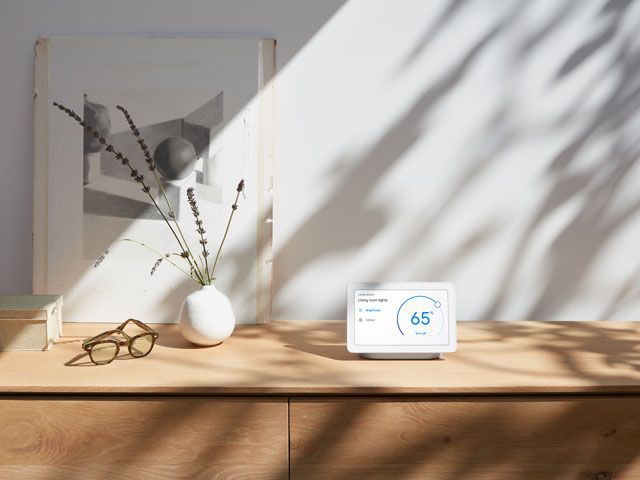The Best Smart Home Platforms
In the ever-evolving world of technology, smart home platforms have become an integral part of modern living. They promise to streamline household management, enhance convenience, and increase energy efficiency. However, with so many options available, choosing the best smart home platform for seamless integration can be overwhelming. Whether you’re looking to automate your home for comfort, security, or efficiency, the right platform can make all the difference. In this post, we’ll explore the best smart home platforms that allow for seamless integration of various devices, making them perfect for creating a cohesive, high-tech environment.
1. Amazon Alexa: The All-Rounder for Smart Homes
Amazon Alexa is arguably one of the most popular smart home platforms, thanks to its broad compatibility and ease of use. Alexa is the virtual assistant that powers a wide range of smart devices, from lights and thermostats to security cameras and appliances. What makes Alexa particularly appealing is its open ecosystem, which supports thousands of third-party smart devices from various manufacturers.
Key Features:
- Voice Control: Alexa can control compatible devices using simple voice commands. This hands-free feature is especially convenient for controlling lights, thermostats, and entertainment systems.
- Smart Routines: Alexa allows you to set up routines that automate various tasks at specified times or triggers. For instance, you can create a routine that adjusts the thermostat when you leave for work or sets the lights to a specific color when you’re watching a movie.
- Amazon Echo Integration: The Echo family of smart speakers and displays provide a central hub for Alexa, allowing you to control devices with ease. The Echo Show models even feature displays for additional interactivity.
Best for: Users who are already embedded in Amazon’s ecosystem and want a platform that works with a variety of smart devices.
2. Google Home: The Smart Assistant with a Focus on AI
Google Home is another leading smart home platform that leverages Google’s powerful AI to deliver personalized automation and seamless integration. Google Assistant is at the heart of the system, providing intuitive voice commands to control smart devices.
Key Features:
- Google Assistant: Powered by Google’s vast AI capabilities, Google Assistant responds to voice commands with impressive accuracy. It can provide context-aware answers, play music, manage schedules, and control smart devices.
- Google Nest Integration: Google Home works closely with Google’s own smart devices, like the Nest Thermostat, Nest Protect smoke alarms, and Nest Cam security cameras. These devices integrate flawlessly within the Google Home app, offering a consistent and unified user experience.
- Inter-device Communication: Google Home supports a wide array of third-party devices, enabling communication between smart bulbs, locks, speakers, and other connected devices.
Best for: Users looking for a smart home platform that offers cutting-edge AI and deep integration with Google’s suite of apps and devices.
3. Apple HomeKit: The Platform for Privacy-Conscious Users
Apple HomeKit is Apple’s smart home platform, and it’s known for its seamless integration with iOS devices. HomeKit ensures that your smart home setup is secure and private, which makes it especially appealing to those who prioritize privacy.
Key Features:
- Secure and Private: One of the standout features of HomeKit is its emphasis on privacy and security. All communications between HomeKit-enabled devices are encrypted, and Apple’s ecosystem ensures that data is processed on local devices rather than in the cloud.
- Siri Voice Control: Siri, Apple’s voice assistant, is integrated with HomeKit, enabling users to control smart devices using voice commands. This works seamlessly on iPhones, iPads, Apple Watches, and even MacBooks.
- Home App Integration: The Apple Home app acts as a central hub for managing all HomeKit devices. Users can create scenes to control multiple devices with a single command (e.g., “Good Morning” can turn on lights, adjust the thermostat, and open the blinds).
Best for: Privacy-conscious individuals and those heavily invested in the Apple ecosystem (iPhone, iPad, Apple Watch).
4. Samsung SmartThings: A Robust Platform for DIY Smart Homes
Samsung SmartThings offers an impressive smart home platform with the flexibility to cater to DIY enthusiasts. SmartThings is known for its versatility, as it supports a wide range of devices from various manufacturers, creating a truly open ecosystem.
Key Features:
- Wide Device Compatibility: SmartThings supports a vast range of devices, including lights, locks, thermostats, cameras, sensors, and more. It integrates well with third-party smart products, allowing users to mix and match brands without compatibility issues.
- Automation and Routines: With SmartThings, users can set up custom automations to control multiple devices based on triggers like time, location, or sensor activity. For instance, you can have your porch lights automatically turn on when motion is detected at night.
- SmartThings Hub: The SmartThings Hub acts as a bridge between your internet router and smart devices, ensuring that all connected devices can communicate seamlessly.
Best for: DIY users who want a highly customizable platform with a wide variety of device options.
5. Zigbee and Z-Wave: Advanced Protocols for Specialized Needs
For advanced users and those with more complex smart home setups, Zigbee and Z-Wave are two communication protocols that allow for robust and efficient device integration. These two platforms are particularly useful when it comes to home automation, as they enable the communication of various smart devices on a single network.
Key Features:
- Low Power Consumption: Both Zigbee and Z-Wave are known for their low power consumption, making them ideal for battery-operated devices like sensors and locks.
- Mesh Network Support: These platforms use a mesh network to allow devices to communicate with each other. This ensures that devices can stay connected even if they are far from the central hub.
- Wide Ecosystem: Zigbee and Z-Wave devices are available from many manufacturers, and many of these devices are compatible with smart hubs like SmartThings.
Best for: Enthusiasts and users with complex automation needs who want highly reliable, efficient, and secure communication protocols.

6. IFTTT: The Custom Automation Platform
IFTTT (If This Then That) is a cloud-based platform that allows users to create custom automations between different smart devices and services. It’s not a smart home hub in itself, but it can be a valuable tool to enhance the functionality of other platforms.
Key Features:
- Custom Triggers and Actions: IFTTT allows you to create custom “applets” where one device or service triggers an action on another. For instance, you can set it up so that when you arrive home, your smart lights automatically turn on and your thermostat adjusts to a comfortable temperature.
- Cross-Platform Integration: IFTTT supports a huge range of apps and smart devices, enabling automation between services like Google Drive, Instagram, and Fitbit, as well as between smart home devices from Alexa, Google, and more.
Best for: Users who enjoy creating custom automations and want to link devices from multiple platforms for more advanced functions.
Smart Home Trends
According to CoherentMarketInsights, the smart home market is growing rapidly, driven by increasing consumer interest in convenience, energy efficiency, and enhanced security. As more consumers seek smarter living spaces, platforms like Amazon Alexa, Google Home, and Apple HomeKit are evolving to offer more robust integrations. These platforms are continuously improving their compatibility with new devices and technologies, providing seamless connections across various ecosystems.
Conclusion
The world of smart home technology offers numerous platforms that promise to make your home smarter, more efficient, and easier to manage. Whether you’re looking for an all-in-one solution like Amazon Alexa, a privacy-focused platform like Apple HomeKit, or a DIY-friendly option like Samsung SmartThings, there’s a platform that suits your needs. By carefully considering your priorities—whether it’s ease of use, device compatibility, or advanced customization—you can find the best smart home platform that ensures seamless integration and elevates your home to the next level of automation.



